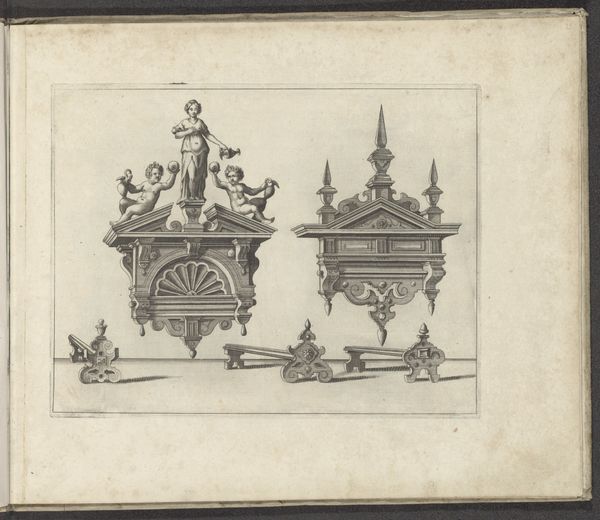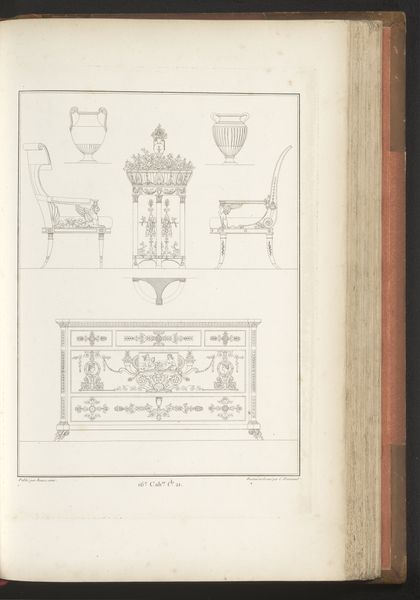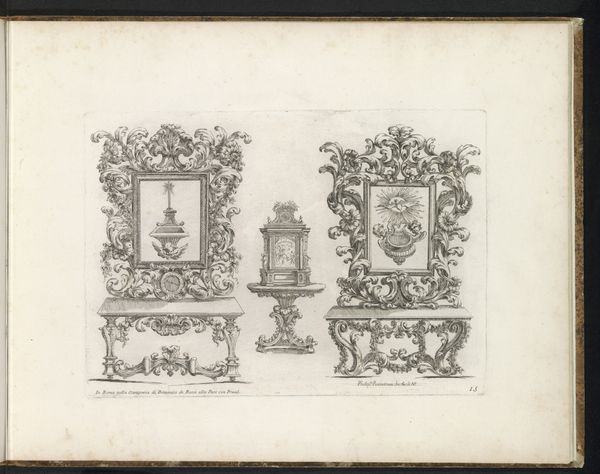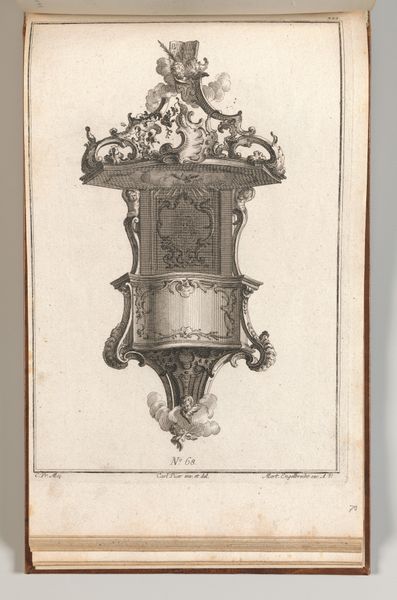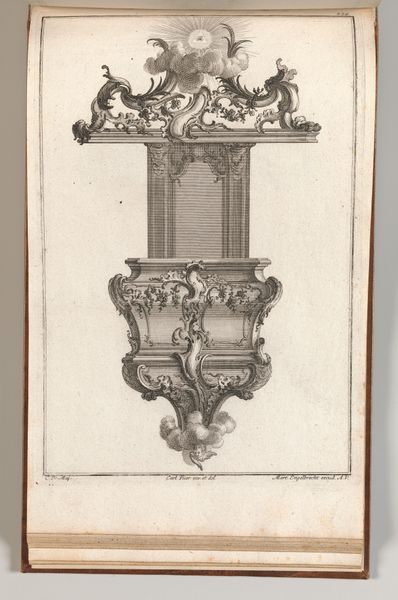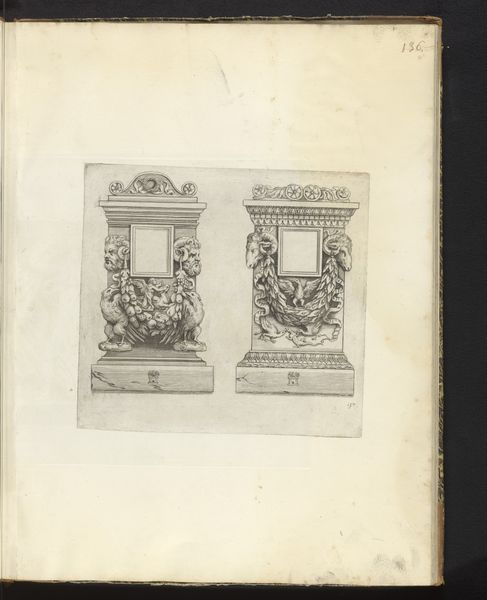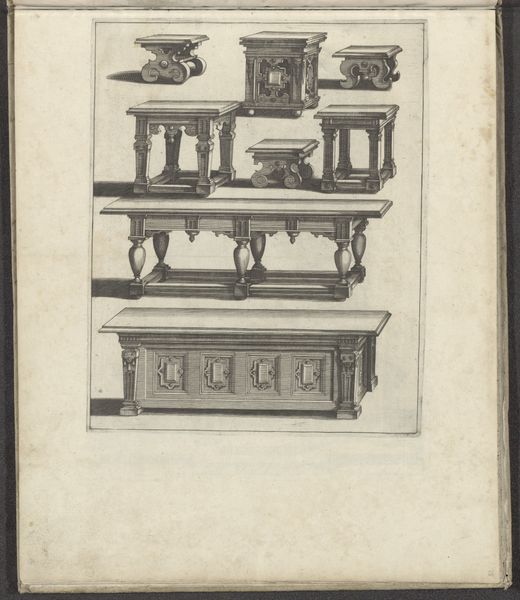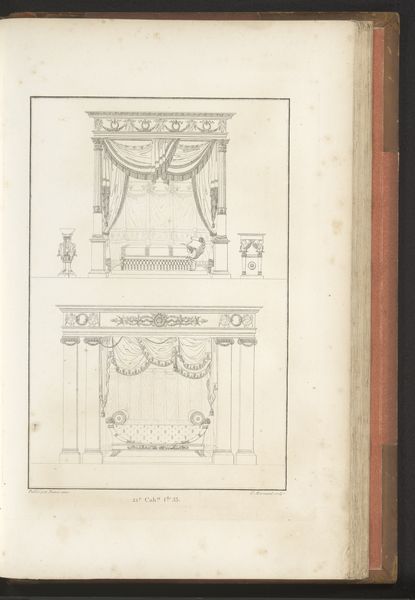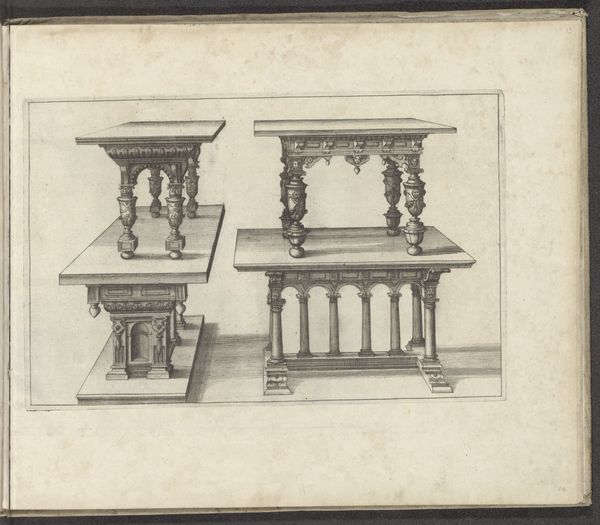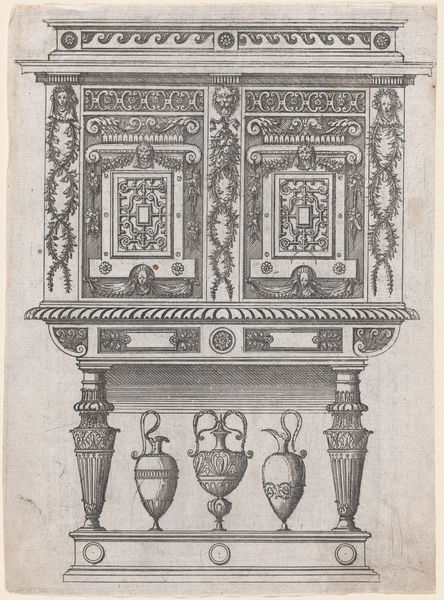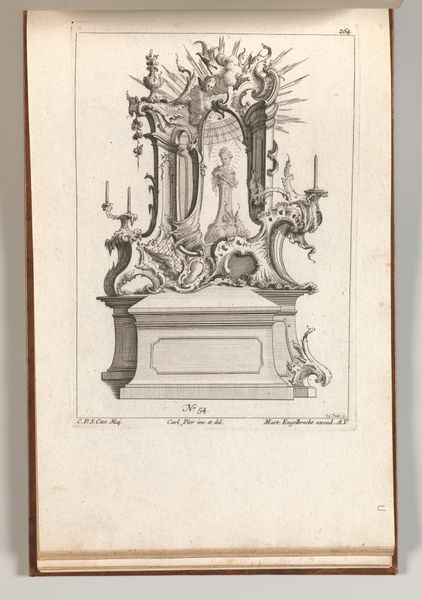
Plate from Ornament Designs Invented by J. Berain (page 71) 1650 - 1715
0:00
0:00
drawing, ornament, print
#
drawing
#
aged paper
#
ornament
#
toned paper
#
ink paper printed
# print
#
book
#
furniture
#
sketch book
#
personal sketchbook
#
men
#
sketchbook drawing
#
watercolour illustration
#
storyboard and sketchbook work
#
sketchbook art
#
watercolor
Dimensions: Overall: 20 5/16 x 16 x 1 3/4 in. (51.6 x 40.6 x 4.5 cm)
Copyright: Public Domain
Curator: Here we have a page, specifically page 71, from *Ornament Designs Invented by J. Berain*, dating from between 1650 and 1715. Editor: It feels like a glimpse into a lost world of opulent excess, doesn’t it? The detail is so fine; I feel a sense of reverence, mixed with a faint discomfort, almost as though I'm trespassing on the private thoughts of royalty. Curator: Jean Berain, the artist, was a master of ornament, his designs meant to adorn everything from furniture to stage sets. The symbols tell stories, reinforcing status and ideals of the monarchy. Editor: The furniture designs are beautiful. And yes, it speaks volumes about the aristocracy—the cherubic faces and grotesque masks represent power structures and elaborate performances of class. The "divine right" etched into every curve and flourish. Do you think such ornate designs inadvertently fostered resentment among the lower classes? Curator: Possibly, though symbolism operates on multiple levels. A monarch might read these symbols as confirmation of their divine mandate. Others see it and long for some semblance of that privilege, or maybe seek to undermine it entirely. Notice how classical forms are intertwined with distinctly French sensibilities, establishing Louis XIV as the new emperor figure. Editor: Absolutely, a kind of visual propaganda cementing authority! These aren't just pretty flourishes; they're instruments of power. What gets visually elevated sends a strong message. Today, do we not also use designs in advertising to elicit feelings of grandeur, sophistication, even belonging? Curator: Certainly, Berain understood the psychological power of images long before the age of mass media. His vocabulary of symbols speaks to enduring human desires—beauty, order, status. Editor: Looking at it from a contemporary perspective, I wonder, is it possible to reclaim some of this ornate tradition outside of its aristocratic roots, maybe use its richness for inclusive aesthetics? Curator: Perhaps. By examining the power dynamics inherent in designs like Berain’s, we can then consider how to democratize beauty and create new symbolic languages for different narratives. Editor: It gives me food for thought. There is power in those swirling lines and little cherubs. Power that shouldn't be only for one privileged class but reimagined for collective emancipation.
Comments
No comments
Be the first to comment and join the conversation on the ultimate creative platform.
